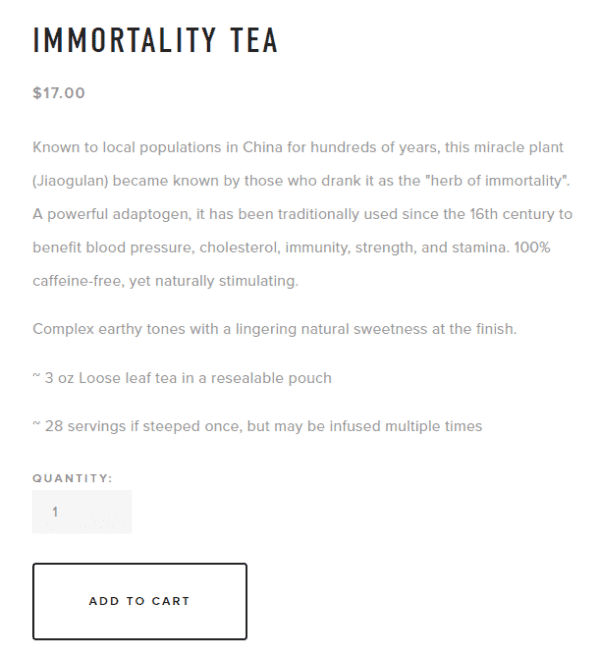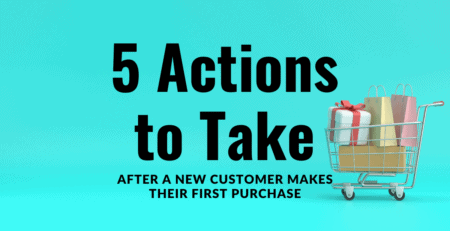Product descriptions help shoppers “feel” a product they can’t touch — here’s how to leverage them to the fullest.
There’s one big downside to online shopping: the inability to see a product in-person.
So when customers can’t touch your product, your product descriptions and landing pages are critical. Your words become their eyes, ears, nose, and hands — providing a full picture of what a product might be like to hold in real life.
In the ecommerce business, product descriptions are your chance to set out what your product is, what it does, and why someone should buy it.
Without a robust description complete with accompanying visuals, you could lose out on customers. In fact, 20% of purchase failures are potentially a result of missing or unclear product information.
But even “good” product descriptions can be better.
Here’s how to write great product descriptions that actually sell.
1. Highlight Product Features and Benefits
While features and product specs are important, what the buyer will gain from purchasing your product is just as important.
Answer questions like: what will this product help buyers do? What will they be able to achieve with it?
You can even go as far as stating how your product will change their life.
The description of the SuperSnorkel does exactly this. Instead of reeling off a list of features, it highlights the benefits those features bring, like easy breathing and the ability to see more wildlife. Those are the things that buyers really care about.

2. Tell a Story
Humans love stories. Stories are relatable and provide context. They hook potential buyers and engage them, making your product seem like more than just a product.
Instead of just describing what they can see, take the viewer on a journey. Mention the history of the product, the backstory of the ingredients used. Or you could even ignite their imagination by encouraging them to put themselves at the center of the plotline.
Immortality Tea recalls the history of the plant used in their product to bring it to life.

3. Write As You Speak
Long, stuffy sentences will put anyone off quickly.
Don’t force your buyers to trip over flowery (and unnecessary) language. Instead, define your ideal buyer persona and pretend you’re writing just for them.
It helps to read your description out loud. If it sounds stilted, it probably is. If that’s the case, rewrite until it flows smoothly.
Innocent Smoothies are pros at a conversational tone. So much so, you can almost hear them describing their Gorgeous Greens smoothie.

4. Use Power Words
Power words target the emotion in buyers, and that’s what drives sales.
If the description of your product makes them feel happy, excited, nostalgic, or any other positive emotion, they’re more likely to buy. In fact using power words can increase conversion rates by 12.7%.
The description of this shampoo packs in power words, like “secret”, “refreshed”, and “bold” to ignite emotion in the reader.

5. Structure for Scanning
Potential customers don’t want to be faced with reams of text — they want to know if a product is right for them in a matter of seconds.
Research shows that visitors read only 20% of an ecommerce web page. The rest of the time, they quickly scan the information available to soak up as much as possible.
Make things easy for your target audience by using bullet points, line breaks, and bold or italic text to pick out key points.
Barney Butter segments its description with bold headers and a box of bullet points that shoppers can quickly scan.

6. Incorporate Relevant Keywords
87% of shoppers start their search for products online, which usually means they type what they’re looking for into search engines using a string of keywords.
If your description doesn’t include these keywords, your product won’t show up.
To increase the chances of ready-to-buy shoppers finding you through search, incorporate relevant keywords into your descriptions. This will bump your products higher in search results and attract more customers.
Think about the words someone might use to search for your product. For example, this dress description uses a number of keywords relating to the product, including “plain dresses”, “green dress”, and “bodycon fit”.

7. High-Quality Images Are Crucial
Your product copy needs to be tight and descriptive, but a picture is worth a thousand words.
Remember, online shoppers can’t see or touch a product before they buy. This is why images are so important. In fact, 63% of customers think product images are more important than the description.
Take great photos, show your product from all angles, and include video where possible.
Drunk Elephant is renowned for its bold colors and imagery. Their product descriptions include multiple staged images of products from every angle.

8. Let Past Customers Do the Talking
93% of customers read reviews before they buy something.
And the more reviews you have, the better. Studies reveal that having 50 or more reviews on your product can lead to a 4.6% increase in conversions.
Think about it: past happy customers are your biggest advocates. Use their recommendations and incorporate positive reviews into your descriptions to add social proof and build trust.
Bombas showcases thousands of reviews on their product pages.

Make Your Product Descriptions Count
Your product descriptions are one of the last steps in the buying cycle. If someone’s reading about your product, there’s a high chance they’re interested in buying.
Writing product descriptions doesn’t have to be hard. Use the writing tips we’ve shared here to ensure your descriptions are engaging and high-converting.
Join GoodCarts today and find out more about growing your sustainable store.











